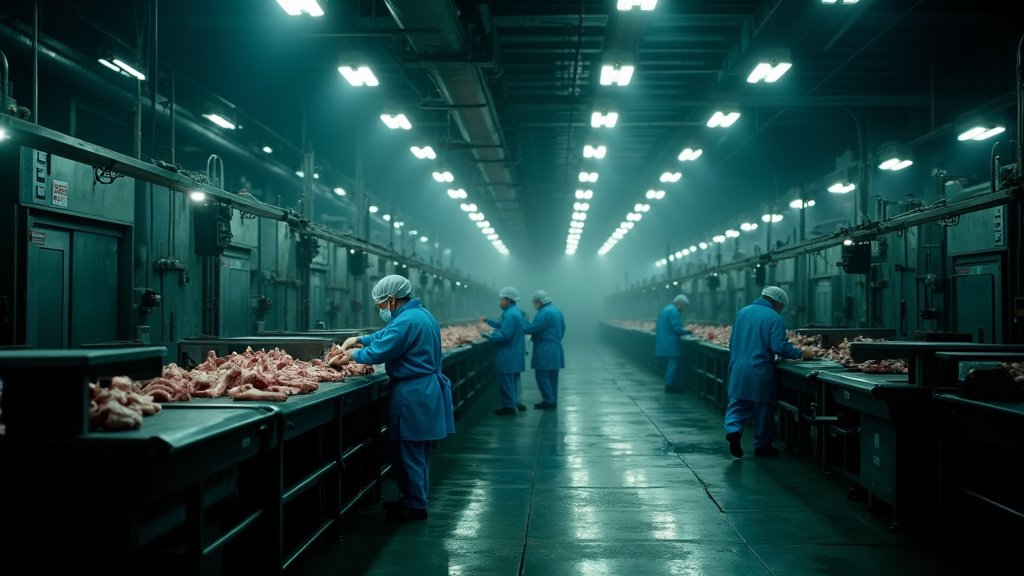Introduction: A Pivotal Debate in the Texas Legislature
Austin, TX – As Texas grapples with persistent and deepening drought conditions, a critical legislative debate is currently unfolding in the state capital. At the center of this debate is Senate Bill 15 (S.B. 15), a comprehensive proposed measure aimed at enhancing statewide water conservation efforts. The bill, introduced with the explicit goal of bolstering Texas’s long-term water security, faced significant scrutiny during a hearing before the Senate Committee on Natural Resources & Economic Development on March 20th.
The hearing brought together a diverse array of stakeholders, highlighting the complex nature of water management in a state with vast agricultural interests, burgeoning urban centers, and critical environmental needs. Representatives from environmental groups and agricultural lobbies presented sharp, often conflicting, testimony, underscoring the deep divisions that exist regarding the best path forward for managing Texas’s finite water resources, particularly in the face of a changing climate and increasing demand.
Provisions of Senate Bill 15
Senate Bill 15 is designed to address water conservation on multiple fronts. One of its key provisions proposes to mandate the adoption of specific water-saving technologies for large-scale irrigation operations across the state. Proponents argue that modern irrigation technology, such as precision application systems and soil moisture sensors, can significantly reduce water consumption in the agricultural sector, which accounts for the largest share of water use in Texas.
Beyond agricultural mandates, S.B. 15 also proposes a substantial financial investment in the state’s municipal water infrastructure. The bill includes a provision for a $500 million bond dedicated to funding critical upgrades and repairs for aging water systems in cities and towns. Supporters of this measure contend that investing in municipal infrastructure is essential to reduce leaks, improve efficiency, and ensure reliable water delivery to urban populations, thereby contributing significantly to statewide conservation goals.
The Drought Imperative: Why Action is Needed
The legislative push behind S.B. 15 is directly linked to the state’s current hydrological conditions. Recent drought indicators paint a concerning picture, showing reservoir levels across Texas are currently below 60% capacity statewide. This figure serves as a stark reminder of the vulnerability of the state’s water supply to prolonged dry periods. Lower reservoir levels impact everything from municipal water restrictions and industrial use to agricultural irrigation and the health of rivers and ecosystems.
The ongoing drought underscores the urgency perceived by the bill’s proponents. They argue that voluntary conservation measures and incremental infrastructure improvements are insufficient to meet the challenges posed by declining water availability and a growing population. The proponents believe that decisive, statewide action, as proposed in S.B. 15, is necessary to build resilience and avoid more severe water shortages in the future.
Conflicting Testimony: Environmental vs. Agricultural Perspectives
The hearing on March 20th provided a clear platform for the divergent views surrounding S.B. 15. Environmental groups testified strongly in favor of the bill, framing it as a crucial step towards sustainable water management and ecological preservation. They presented data and expert opinions highlighting the potential for significant water savings through the proposed mandates and infrastructure investments. Environmental advocates emphasized that conserving water is not just an economic or agricultural issue but also one vital for maintaining river flows, protecting aquatic life, and ensuring the health of Texas’s natural landscapes.
Conversely, representatives from agricultural lobbies expressed significant concerns about the bill’s potential impact on the state’s farming and ranching communities. Their testimony focused on the argument that the proposed mandates for specific water-saving technologies are overly burdensome for farmers. Agricultural opponents cited concerns about the high upfront costs of purchasing and installing new equipment, potential impacts on crop yields, and the practical challenges of implementing uniform technology requirements across diverse farming operations and land types.
Farmers and their representatives argued that many producers are already utilizing efficient practices and that a top-down mandate could hinder their ability to adapt to local conditions and market demands. They expressed worries that the financial burden of complying with S.B. 15 could threaten the economic viability of family farms and potentially lead to reduced agricultural production in Texas, a state with a rich history and significant contribution to the national food supply from its agricultural sector.
Proponents’ Stance: Long-Term Sustainability
Supporters of S.B. 15, including various water districts, conservation advocates, and some municipal leaders, reiterate the pressing need for the legislation. They emphasize the long-term necessity for sustainable water management in Texas. Proponents argue that while the initial investment or adaptation period might pose challenges, the benefits of S.B. 15, particularly in securing a reliable water supply for future generations, far outweigh the costs.
They point to projections showing continued population growth in Texas, which will inevitably increase demand for water. Without proactive conservation measures and infrastructure improvements, they contend, the state faces the risk of severe water crises during future droughts. Proponents suggest that the bond proposal could also stimulate the economy through construction jobs and the adoption of innovative water technologies.
Opponents’ Concerns: Economic and Practical Burdens
Opponents of S.B. 15 do not necessarily dispute the need for water conservation but argue that the bill’s approach is flawed. Their primary concern remains the economic impact on the agricultural sector. They argue that imposing costly mandates without sufficient financial assistance or flexibility could disproportionately harm small and medium-sized farms.
Beyond direct costs, agricultural lobbies also raised questions about the practical implementation of statewide mandates. They suggested that a more collaborative approach, potentially involving incentives and localized conservation planning, might be more effective and less disruptive than a blanket regulation covering all large-scale irrigation operations. There were also questions raised about the administration of the $500 million bond and how funds would be allocated to ensure equitable distribution and maximize conservation impact across the state.
The Path Forward
The hearing on March 20th marked a significant step in the legislative process for S.B. 15, but it is by no means the final word. The bill will likely undergo further discussion, potential amendments, and additional committee votes before it could potentially reach the floor of the Texas Senate for a full vote. If passed by the Senate, it would then need to clear the House of Representatives and receive the Governor’s signature to become law.
The debate surrounding S.B. 15 highlights the delicate balancing act required in Texas water policy – addressing the urgent need for conservation and future water security while considering the economic realities and operational challenges faced by critical state industries like agriculture. As drought conditions persist, the outcome of this legislative battle will have significant implications for how Texas manages its most precious resource for decades to come.






